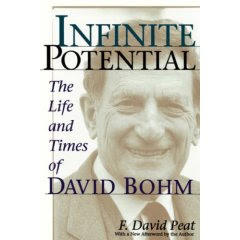I’m just back from a conference in Mexico held on what is called the Mexican Riviera on the coast of the Yucatan Peninsula. After the conference I spent a number of days on the Yucatan Peninsula visiting Mayan ruins. In part I felt I SHOULD, but something else seemed to be calling me as well. I first went to Merida, a former Mayan city that was destroyed by the conquistadors and is now a city with a strong colonial influence. Only the cities that the Mayans had already abandoned were NOT destroyed.

The first day I took a tour to Uxmal and then to Kabah --two Mayan ruins about an hour away. I approached them as a tourist, conscientiously trying to take in as much information as I could. The picture shows the main temple at Uxmal. The Mayans were inveterate temple builders, often building temple over temple on the very same site, as they did here. They painted them bright red.
The next day I had planned to take a tour to see some caves and three lesser Mayan sites. I wondered whether it was really worth it. After all I was going to go to Chetzen Itza and then Tulum and could instead use the day to explore Merida. Wouldn't the law of diminishing returns begin to set in? Nonetheless I decided to go ahead with the plan I had so carefully worked out.
The bed and breakfast I was staying at had an arrangement with a tour company. I signed up with them, rather than with another company that had an apparently similar tour about 15 percent cheaper. It was easier and I wanted to help out the inn keeper.
I had great trouble understanding the tour guide who picked me up. Eventually I realized that he was announcing that lunch was not included as I (and apparently many others) just assumed. It seems to be the custom there and it was included in the other tour.
No lunch and all day with a tour guide I didn't understand (and another couple who did not speak English). I said I didn't want to go and asked for my money back. The driver kept crossing himself and spitting into his hands. We were a ways from the hotel by this time, so he drove me to the downtown office of the tour company. First they said I should go back to the hotel, they would call, and the hotel would give me my money back. When I asked them to put that in writing they said they would pay for my lunch, if I would go on the tour. Somewhat to my own surprise, I agreed.

The Loltun caves, the first stop, have been used since prehistoric times. The Mayans hid from the conquistadors in them. Extending at least 6 km, they have many broad caverns and massive stalagmites. (To see them required hiring a special guide---who used a laser pointer.) I realized for them alone the day was worth it.
The minor sites were-well minor sights---at least for someone without much insight into the intricacies of different Mayan styles. (Actually, I have now come to appreciate the unique style of these ruins.) They were largely free of other tourists. I tried to believe what my guide was saying but some of its strained credulity. By no stretch of the imagination could I see elephant trunks in the many odd shaped protuberances punctuating the façade of one of the buildings. Soon I stopped listening.

Instead I tuned into the peacefulness of the day and the calmness of the grass in front of the long temple. Eventually I glanced at where the grass met the corner of the wall of the Temple. I experienced the coolness and impartiality of the stones and the strength, permanence, and angularity of the wall. I realized that Mayan architecture served at least in part as a bulwark against the natural word--- against the softness and fecundity of nature, on the one hand, and against human dependence on it and powerlessness in the face of it whims, on the other. The wall had a presence---one that spoke back to the passing of time and our limited lifespan and said something forceful and lasting.
I recognized this "standing up to nature” as the masculine project. I do not identify with it personally, yet I do feel very appreciative of it. On the way out of the site, the guide called our attention to a carved pillar of a Mayan warrior off to the side of the path. He said that it was unusual for carved columns NOT to have hieroglyphics, but the Mayans wanted to have warriors on their columns because they were interested in “imposing constraints.” I suspect that carved pictures long predated carved hieroglyphics. Nonetheless with those two words, ‘imposing constraints,’ my guide--- full of the unexpected---had captured my new insight about Mayan architecture as well as the masculine project in a nutshell.
My experience at Chechen Itza helped deepen at the same time that it opened up my insight about the Mayans. I saw the main temple for the first time during the evening Sound and Light show. It had a presence and power that spoke back to nature in a somewhat different way.

In its perfection it captured not only the human spirit, but something other worldly as well. I found it awesome in the real senses of the word. The next day, even amid the crowds and the heat, from time to time I was able to give myself over to its power and authority. Then it spoke to me not only as a beautiful artifact, but as something charged with human spirit, even as it surpassed the human spirit. This was much more than just the masculine project—though I cannot say what it might be.
My guide the next day---a very thoughtful and sensitive man--said that the power of Mayan culture came from the fact that women were educated just like men and were considered equals. Given the hierarchical nature of ancient Mayan culture, I have my doubts that this is true (or true throughout the many centuries the Mayan culture flourished.) Jean Molesky-Poz, one of the woman I got to know at the conference, is an expert on contemporary Mayan spirituality, with a focus on women. She described a gentle culture in which people were very in touch with each other with the Earth and with Spirit. I am going to buy her book, which in part looks at the continuity between contemporary and ancient Mayan spirituality, to see if it might provide some hints of what “this more” is I experienced at Chetchen Itza
.
As I waited for my bus in the parking lot to take me to Tulum, the Mayan city by the sea, I tried an experiment. Could I give myself over to other buildings in this way and would they speak to me as well? I tried ‘to listen’ to the buildings that housed the ticket office and market around Chechen Itza but they seemed to have very little to say.

At Tulum, known more for its setting than it architecture, I appreciated the beauty of this site perched above the sea. But when I try to ‘listen’ all that really spoke to me in this special way was the long grass towards the far end of the extensive site waving rhythmically and sweetly in the breeze.

The last picture is from the Governor's Palace in Merida. After my tour to the minor sites, I told the tour guide (of imposing constraints fame) to drop me off at the contemporary art museum. He said that I should go see the murals on the second floor of the Governor's palace instead. I didn't, but the next morning, I rushed out to get a look before my bus to Chetchen Itza. I am so glad I did. The 26 murals by Fernando Castro Pacheco depict the history of the Mayans on the Yucatan Peninsula. This is the center picture of three that frame the well of the grand staircase. It represents the birth of Mayan man from an ear of maze, as described in the Popol Vuh, the sacred book of the Mayans.















3 comments:
I was in the Yucatan in 1967 and 1970. I saw those ruins. It was so long ago -- it was like I never really went there. I remember how white the women's traditional dresses were.
You don't feel the presence of some buildings, because some buildings don't have any presence -- mainly these are not good places to go anyway. Otherwise, some buildings feel good, bad, old, unhappy, pretty, all kinds of ways.
Fred
Glad to be able to continue with you through your blog. Your sense of "standing up to nature" was very insightful. I feel they perceived, in part through their quatrefoil image-space a cosmos which was more solid that what you call nature. You picked that up in your observations. What about your experience of the ball court at Chichen Itza?
Jean
Bonjorno, intuition-indepth.blogspot.com!
[url=http://viagragent.pun.pl/ ]Acquisto viagra online[/url] [url=http://cialishols.pun.pl/ ]Acquistare cialis [/url] [url=http://viagratetb.pun.pl/ ]Compra viagra in Italia[/url] [url=http://cialisiall.pun.pl/ ]Comprare cialis [/url] [url=http://viagraradj.pun.pl/ ]Acquisto viagra in Italia[/url] [url=http://cialisantr.pun.pl/ ]Acquistare cialis [/url]
Post a Comment